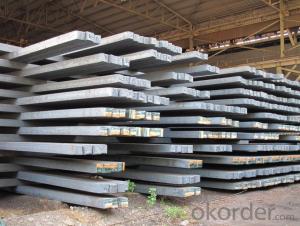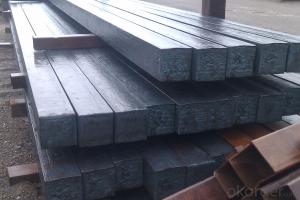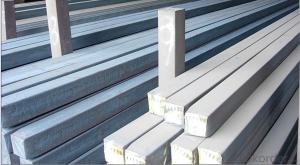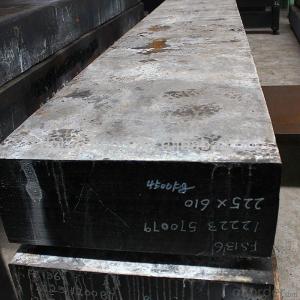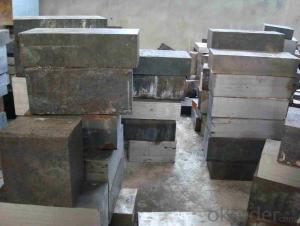Prime quality prepainted galvanized steel 710mm
- Loading Port:
- Tianjin
- Payment Terms:
- TT OR LC
- Min Order Qty:
- 100 m.t.
- Supply Capability:
- 10000 m.t./month
OKorder Service Pledge
OKorder Financial Service
You Might Also Like
Construction building material galvanized color prepainted cold
rolled steel coil
Prepainted steel sheet is coated with organic layer, which provides higher anti-corrosion property and
a longer lifespan than that of galvanized steel sheets.
The base metals for prepainted steel sheet consist of cold-rolled, HDG electro-galvanized and hot-dip
Alu-zinc coated. The finish coats of prepainted steel sheets can be classified into groups as follows:
polyester, silicon modified polyesters, polyvinylidene fluoride, high-durability polyester, etc
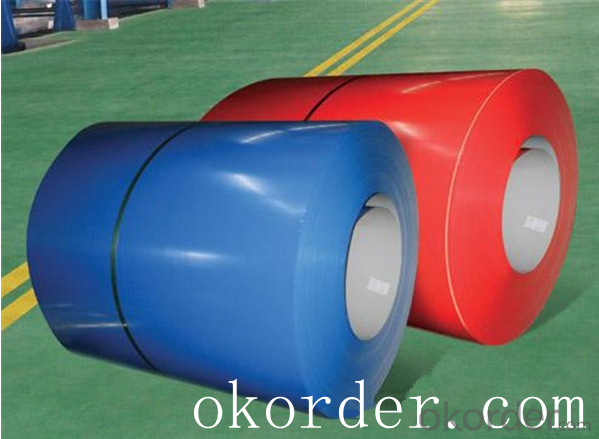
Standard and Grade :
Pre-paint galvanized steel coil | ||||
ASTM A755M-03 | EN10169:2006 | JISG 3312-2012 | ||
Commercial quality | CS | DX51D+Z | CGCC | |
Structure steel | SS GRADE 230 | S220GD+Z | CGC340 | |
SS GRADE 255 | S250GD+Z | CGC400 | ||
SS GRADE 275 | S280GD+Z | CGC440 | ||
SS GRADE 340 | S320GD+Z | CGC490 | ||
SS GRADE550 | S350GD+Z | CGC570 | ||
S550GD+Z | ||||
Application:
Outdoor | Roof, roof structure, surface sheet of balcony, frame of window, door of garage, rolled shutter door, booth, Persian blinds, cabana, etc |
Indoor | Door, isolater, frame of door, light steel structure of house, home electronic appliances, ect. |
Specifications
Commodity Name: Prepainted Galvanized Steel Coil
Standard: AISI, ASTM, DIN, GB, JIS
Grade: TDC52D+Z
Thickness 0.13-8.0mm
Width:600mm-1350mm
Zinc Coating:275g/m2
Polyester Coating Thickness:Top and Back coating thickness depend by Buyer Requirement.
Polyester Coating Type:2/2,1/2m,1/2.
Polyester Type: Polyester, silicone modified polyester, high durability polyester (HDP), polyvinylidene fluoride (PVDF)
Unit Roll Weight:5-20tons
Place of Origin Shanghai , China (Mainland)
Surface Treatment :Color Coated
Manufacture Progress:HRC-CRC-GALVANIZED-COLOR COATED
Application : Construction, electrical, transportation, steel plant, composite board plant, steel tile factory
Payment & Shipping Terms:T/T ,L/C, and FOB CHINA
Minimum Order Quantity: 25Tons
Packge Type: Moisture-proof paper inner,Steel outside,Bundle by steel rope.
Package in Container : Wood as a foot pad, wire rope reinforcement,PPGI steel coil tied together by steel rope.
- Q:What are the different methods of steel billet surface painting?
- There are several different methods of steel billet surface painting that are commonly used in various industries. These methods include: 1. Spray painting: This is one of the most common methods, where a spray gun is used to apply a thin and even layer of paint onto the steel billet surface. It provides a smooth and consistent finish and allows for quick and efficient coverage. 2. Powder coating: In this method, a dry powder is applied to the steel billet surface using an electrostatic charge. The powder adheres to the surface and is then heated to form a durable and long-lasting coating. Powder coating offers excellent resistance to corrosion, chemicals, and abrasion. 3. Electroplating: This method involves immersing the steel billet into a solution containing a metal salt. A direct current is then applied, causing the metal ions in the solution to be deposited onto the surface of the billet. Electroplating provides a protective and decorative coating, enhancing the appearance and durability of the steel. 4. Hot-dip galvanizing: This method involves immersing the steel billet into a bath of molten zinc. The zinc forms a protective layer on the surface of the billet, providing excellent corrosion resistance. Hot-dip galvanizing is commonly used for outdoor applications where the steel is exposed to harsh environmental conditions. 5. Epoxy coating: Epoxy coatings are applied as a two-part system, where a resin and a hardener are mixed together and then applied to the steel billet surface. The epoxy cures to form a tough and chemical-resistant coating that provides protection against corrosion and abrasion. 6. Electrophoretic painting: This method involves immersing the steel billet into a tank containing a paint solution and applying an electric current. The paint particles in the solution migrate towards the billet surface due to the electric charge, resulting in a uniform and consistent coating. Each of these methods has its own advantages and disadvantages, and the choice of method depends on factors such as the desired finish, the environment in which the steel billet will be used, and the required level of protection.
- Q:What are the different types of steel billets used in the manufacturing industry?
- The manufacturing industry utilizes various types of steel billets, each possessing unique properties and qualities. Here are a few examples: 1. Carbon Steel Billets: Predominantly composed of iron and carbon, carbon steel billets are widely utilized due to their exceptional strength and durability. They find applications in construction, automotive, and machinery manufacturing sectors. 2. Alloy Steel Billets: By introducing alloying elements like manganese, nickel, chromium, and molybdenum to carbon steel, alloy steel billets exhibit enhanced characteristics such as increased strength, hardness, and resistance to corrosion. They are commonly employed in the production of high-strength components and machinery parts. 3. Stainless Steel Billets: Consisting of iron, chromium, and other alloying elements like nickel and molybdenum, stainless steel billets demonstrate exceptional resistance to corrosion and staining. They are extensively used in the manufacturing of kitchen appliances, automotive parts, and medical equipment. 4. Tool Steel Billets: Tailored specifically for the production of tools, dies, and molds, tool steel billets possess superior hardness, wear resistance, and toughness. These attributes make them ideal for applications involving cutting, shaping, or molding materials. 5. Micro-Alloyed Steel Billets: This category of billets incorporates trace amounts of alloying elements such as vanadium, niobium, or titanium. Micro-alloyed steel billets are employed to enhance the strength and toughness of the steel, rendering them suitable for structural applications in industries like construction and transportation. It is crucial to recognize that these examples represent only a fraction of the various specialized steel billets available in the manufacturing industry. Each type is tailored to meet specific requirements for different applications and industries.
- Q:What is the shelf life of a steel billet?
- The shelf life of a steel billet is indefinite as long as it is stored in a dry and controlled environment to prevent corrosion.
- Q:What is the role of steel billets in the manufacturing of structural steel bridges?
- Steel billets play a crucial role in the manufacturing of structural steel bridges. These billets are essentially semi-finished products that serve as the raw material for the production of various steel products, including structural steel bridges. The process begins with steel billets being heated and then passed through a series of rolling mills to shape them into the desired form. This rolling process ensures that the billets are transformed into long, slender sections that can be utilized in the construction of bridges. Once the steel billets have been rolled into the appropriate shapes, they are then further processed and fabricated to create the necessary components for structural steel bridges. These components can include beams, columns, girders, and other critical elements that provide strength, stability, and load-bearing capabilities to the bridge structure. The use of steel billets in the manufacturing of structural steel bridges offers several advantages. Firstly, steel is known for its exceptional strength-to-weight ratio, making it an ideal material for constructing bridges that can withstand heavy loads while remaining relatively lightweight. The versatility of steel also allows for the creation of complex bridge designs, accommodating different architectural and engineering requirements. Additionally, steel billets are highly durable and resistant to environmental factors such as corrosion, which is crucial for ensuring the long-term integrity and safety of the bridge structure. This durability contributes to the overall longevity of the bridge, reducing maintenance and replacement costs over time. In summary, steel billets serve as the foundation for the production of structural steel bridges. Through the rolling and fabrication processes, these billets are transformed into the various components that make up the bridge structure, providing strength, stability, and durability. The use of steel billets enables the construction of bridges that can withstand heavy loads, remain lightweight, and withstand environmental factors, ensuring the long-term integrity and safety of the bridge.
- Q:How are steel billets used in the production of bearings?
- Steel billets are first heated and then forged or rolled into the desired shape and size for bearing production. These billets serve as the raw material for manufacturing bearing components such as inner and outer rings, cages, and rolling elements. The billets are carefully processed and machined to meet the specific requirements of the bearing design, ensuring strength, durability, and precision in the final product.
- Q:How are steel billets used in the production of pipes?
- Pipes rely heavily on steel billets as a vital raw material. To commence the manufacturing process, the billets undergo multiple transformations. To begin with, the steel billets are subjected to high temperatures, rendering them pliable. This procedure, known as hot rolling, enables the billets to be molded into lengthy cylindrical shapes. The heating process not only enhances the steel's internal structure but also eliminates any impurities. Once the billets have been heated, they are passed through a series of rolling mills. These mills gradually reduce the size of the billet, shaping it into a round bar called a "bloom." Subsequently, the bloom is further processed by traversing a piercing mill, which forms a hollow cavity in the center. Following the piercing process, the bloom is elongated and molded into a pipe through continuous rolling. The elongation is achieved by guiding the bloom through a sequence of sizing mills, gradually stretching and shaping it to the desired pipe dimensions. This continuous rolling process ensures uniform thickness and shape throughout the pipe's length. Moreover, steel billets can also be employed in the production of seamless pipes. In this scenario, the billets are heated and pierced in a manner similar to the aforementioned process. However, instead of elongation through rolling, the pierced billet is subjected to further processing known as extrusion, where it is elongated and reduced in diameter. This results in a seamless pipe devoid of welded joints, a preference in industries such as oil and gas. In summary, steel billets play an indispensable role in pipe manufacturing. Through processes involving heating, rolling, and shaping, the billets are transformed into pipes of various sizes and types. These pipes find applications in diverse industries, including construction, infrastructure, and energy, facilitating the transportation of fluids and gases.
- Q:What is the typical length of a steel billet?
- The typical length of a steel billet can vary depending on several factors such as the intended use, production process, and specific industry standards. However, in general, steel billets are commonly produced in lengths ranging from 2 to 12 meters (6.5 to 40 feet). These lengths are commonly used for further processing, such as hot rolling or forging, to create various steel products like bars, rods, beams, or other structural components. It is important to note that the actual length of a steel billet can be tailored to meet the specific requirements of a particular application or customer order.
- Q:Are steel billets used in the manufacturing of industrial machinery?
- Commonly used in the manufacturing of industrial machinery are steel billets. These semi-finished products are typically produced through continuous casting. They serve as the raw material for various types of machinery, including heavy-duty equipment, construction machinery, and machine tools. Industrial machinery prefers steel due to its strength, durability, and resistance to wear and tear. Steel billets often serve as the starting material for processes such as forging, rolling, or machining to create specific components required for machinery. These components encompass gears, shafts, frames, brackets, and other structural parts. Steel possesses high-quality properties, including high tensile strength and excellent mechanical properties, making it an ideal material for enduring demanding conditions and heavy loads in industrial machinery. Furthermore, steel's easy weldability and machinability allow manufacturers to produce intricate and precise parts for machinery. In summary, steel billets play a vital role in the manufacturing of industrial machinery. They provide the necessary raw material to create robust and dependable components capable of withstanding the challenges posed by various industrial applications.
- Q:What are the main factors affecting the magnetic properties of steel billets?
- The main factors affecting the magnetic properties of steel billets are the composition of the steel, the crystal structure, the presence of impurities, and the manufacturing process used.
- Q:What are the potential applications of steel billets in the aerospace industry?
- Steel billets have a wide range of potential applications in the aerospace industry. One of the primary uses of steel billets in this industry is for the production of structural components. Steel billets can be forged or machined into various shapes and sizes to create strong and durable parts such as beams, brackets, and frames. Another important application of steel billets in aerospace is for the manufacturing of landing gear components. Landing gear systems require materials that can withstand high levels of stress and fatigue, and steel billets offer excellent strength and toughness properties, making them ideal for this purpose. Steel billets can also be used in the production of engine components. The aerospace industry requires materials that can withstand extreme temperatures and maintain their mechanical properties under high stress conditions. Steel billets can be heat-treated to enhance their resistance to heat and corrosion, making them suitable for use in engine parts such as turbine blades, shafts, and casings. Furthermore, steel billets can be utilized in the construction of fuel systems and hydraulic systems. These systems often require components that can handle high pressure and are resistant to corrosion. Steel billets can be machined into fittings, connectors, and valves that meet these requirements, ensuring the safety and reliability of these crucial systems. Overall, the potential applications of steel billets in the aerospace industry are vast and diverse. From structural components to landing gear systems, engine parts, and fuel systems, steel billets offer the necessary strength, durability, and resistance properties required for the demanding conditions of aerospace operations.
1. Manufacturer Overview |
|
|---|---|
| Location | |
| Year Established | |
| Annual Output Value | |
| Main Markets | |
| Company Certifications | |
2. Manufacturer Certificates |
|
|---|---|
| a) Certification Name | |
| Range | |
| Reference | |
| Validity Period | |
3. Manufacturer Capability |
|
|---|---|
| a)Trade Capacity | |
| Nearest Port | |
| Export Percentage | |
| No.of Employees in Trade Department | |
| Language Spoken: | |
| b)Factory Information | |
| Factory Size: | |
| No. of Production Lines | |
| Contract Manufacturing | |
| Product Price Range | |
Send your message to us
Prime quality prepainted galvanized steel 710mm
- Loading Port:
- Tianjin
- Payment Terms:
- TT OR LC
- Min Order Qty:
- 100 m.t.
- Supply Capability:
- 10000 m.t./month
OKorder Service Pledge
OKorder Financial Service
Similar products
New products
Hot products
Related keywords
